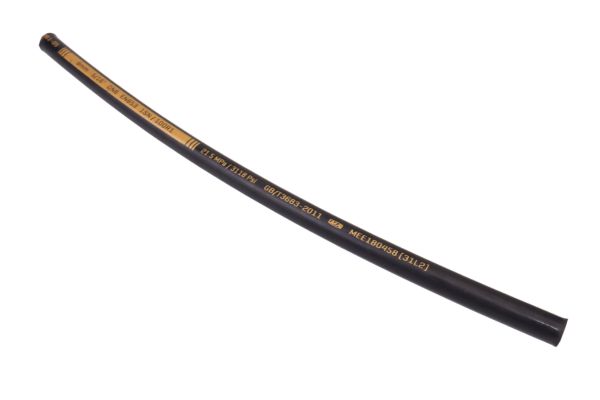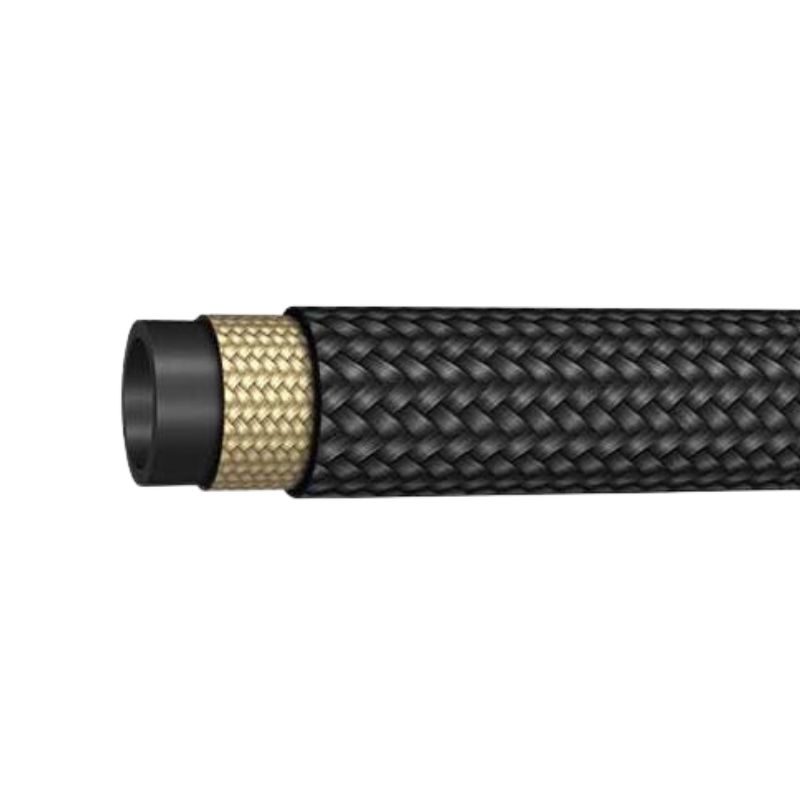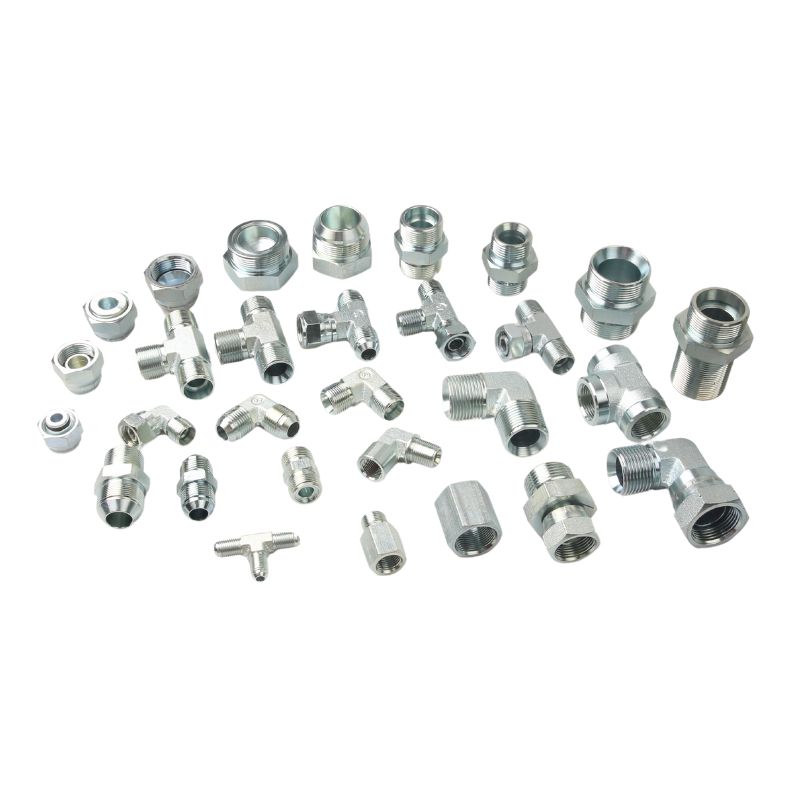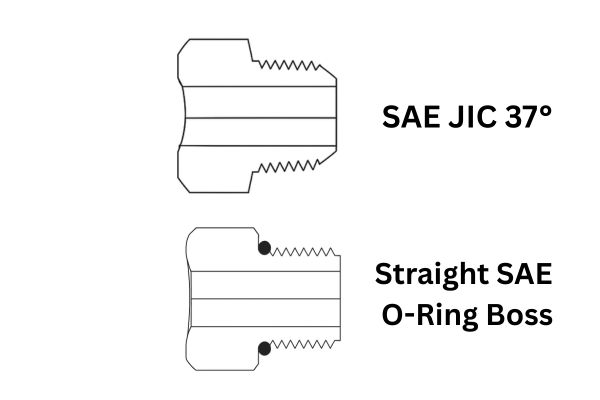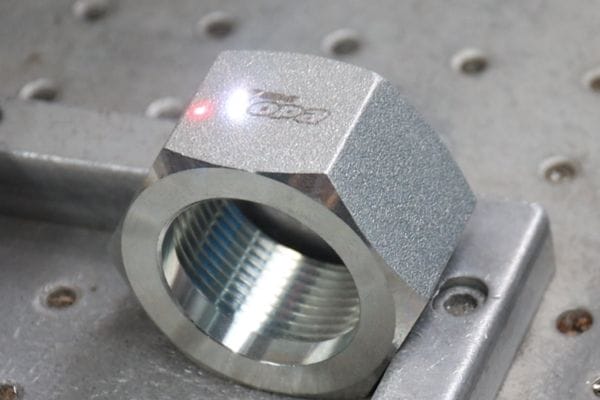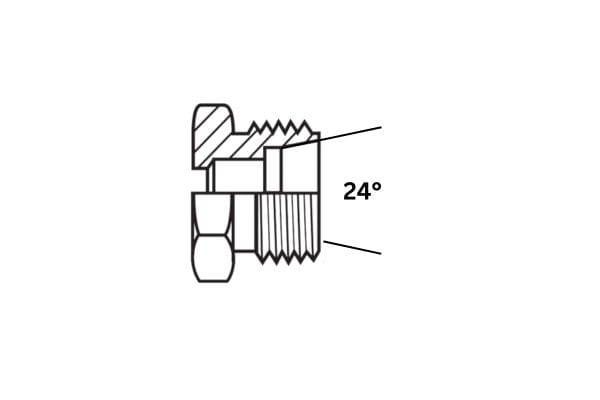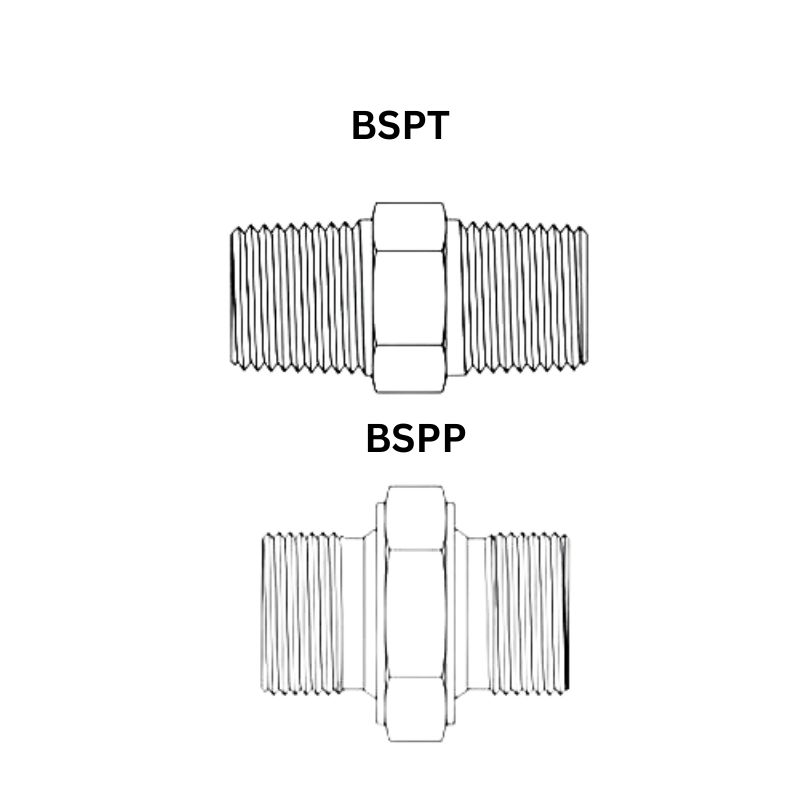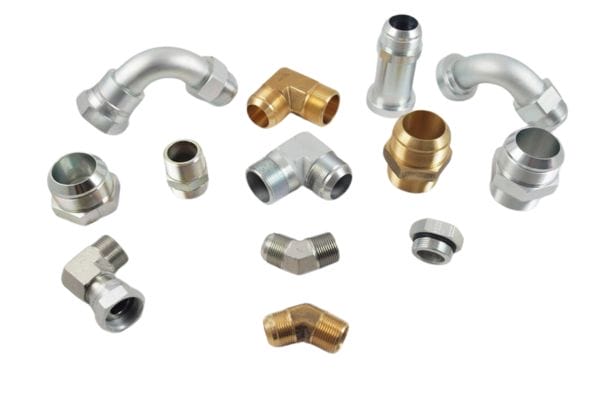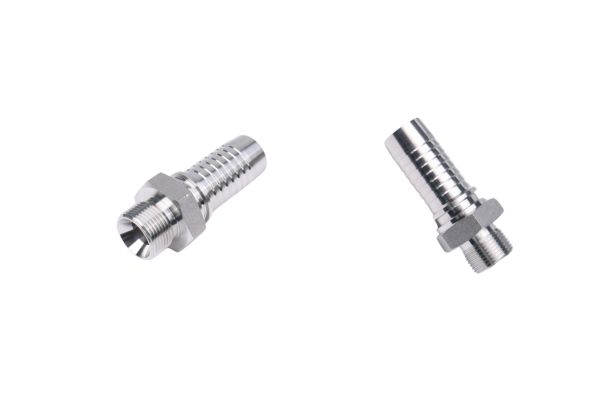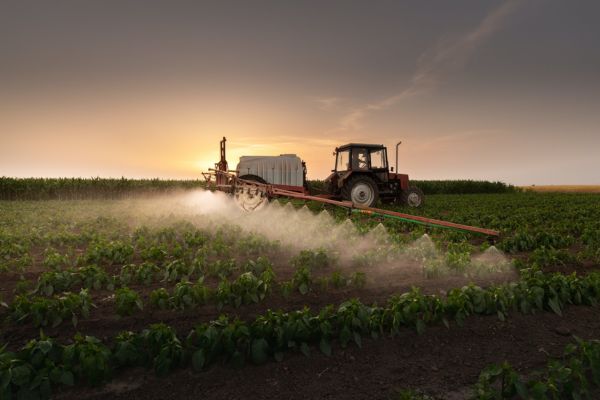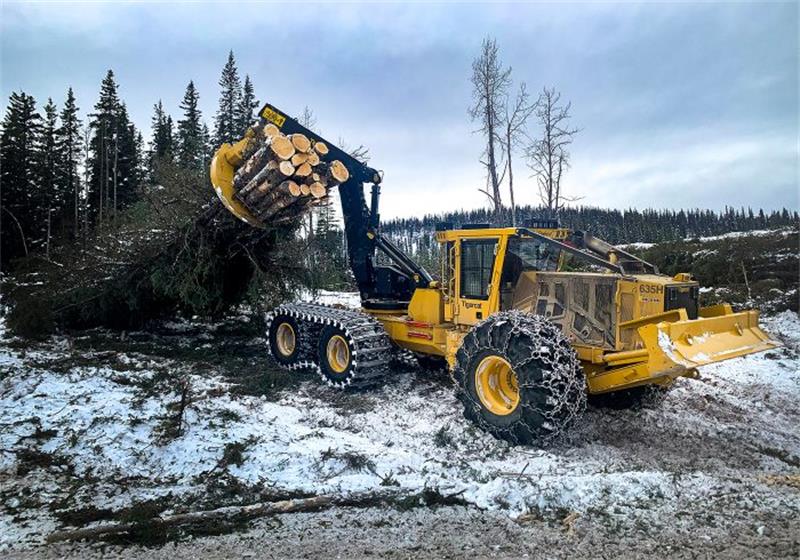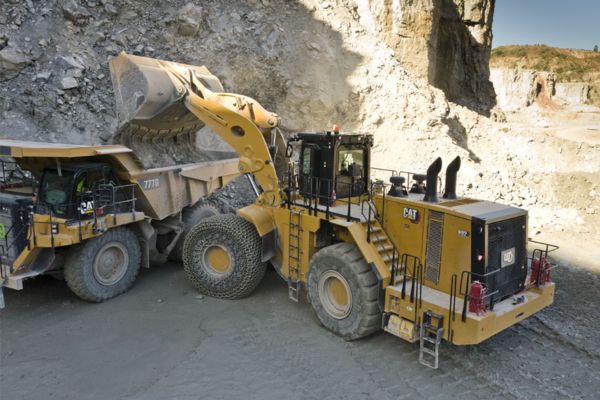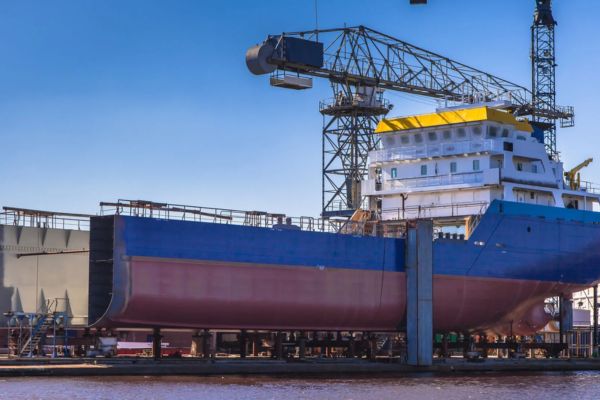In a harsh marine environment, a corroded hydraulic fitting isn’t just a leak—it’s a critical failure waiting to happen. Equipment downtime at sea is expensive and dangerous, with no quick access to a repair shop.
Use reusable stainless steel fittings. They offer the ultimate corrosion resistance of marine-grade 316 stainless combined with the ability to be assembled and disassembled in the field using only basic hand tools, making them the top choice for offshore and marine repairs.
Why is Corrosion the Enemy in Marine Hydraulics?
You install a brand-new hydraulic hose assembly on your deck winch. A few months later, it’s covered in rust, weeping fluid, and poised for a catastrophic failure during a critical operation.
Corrosion relentlessly attacks metal, weakening it until it can no longer contain system pressure. In a marine environment, the combination of saltwater, humidity, and air creates a highly aggressive electrolyte that rapidly destroys standard carbon steel, even when it’s plated. This leads to leaks, equipment failure, and safety hazards.
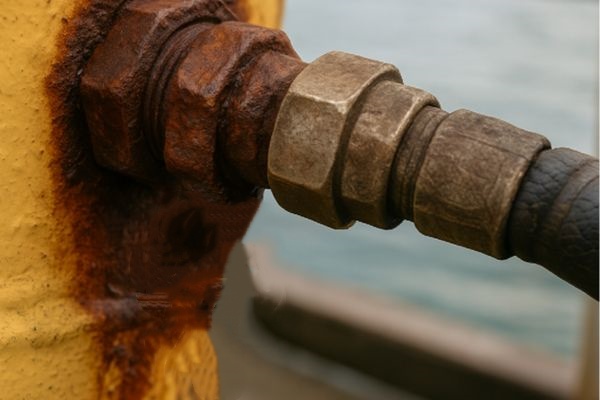
The financial cost of corrosion in the maritime industry is measured in billions of dollars annually. But the immediate cost is much higher: a failed fitting on a crane, anchor windlass, or steering system can have disastrous consequences. The only way to fight this is to choose a material that is inherently resistant to this specific type of attack. This is where moving beyond standard materials isn’t just an upgrade; it’s a fundamental requirement for safe and reliable operation.
The Science of Saltwater Corrosion
Saltwater is far more corrosive than fresh water. The chloride ions in salt aggressively attack the protective oxide layer on most metals, including standard stainless steels like 304. Once this layer is breached, pitting corrosion begins. These small pits can quickly deepen and compromise the structural integrity of the fitting, leading to cracks and failures under pressure. This is why material selection is so critical.
Different Marine Corrosion Zones
Not all marine environments are equal. The threat level changes based on where the fitting is located on the vessel or structure.
| Zone | Environment | Corrosion Threat | Recommended Protection |
| Atmospheric | On deck, exposed to air and occasional spray. | High | 316 Stainless Steel |
| Splash Zone | Constantly wet from waves and spray. | Very High | 316 Stainless Steel is essential. |
| Submerged | Continuously underwater. | Extreme | Requires specialized alloys or 316 with cathodic protection. |
Understanding these zones helps you prioritize where to use the highest-grade materials. For any hydraulic fitting used on a ship’s exterior, 316 stainless is the minimum standard.
The Hidden Cost of a “Cheaper” Fitting
Let’s look at the real cost. A standard zinc-plated carbon steel fitting might cost $10. A 316 stainless version could be $40. The temptation is to save that $30. However, the steel fitting may fail in one year, requiring a replacement. If that failure happens at sea, you have the cost of the replacement part, emergency labor, lost operational time (which could be thousands of dollars per day), and the potential for environmental cleanup. The $40 stainless fitting, which lasts for years, is clearly the more economical choice.
What Exactly Makes a Hydraulic Fitting “Reusable”?
Your hydraulic hose fails in a remote location. Your only option is to replace the entire pre-made assembly, but you don’t have the right length. Your equipment is down until a replacement can be shipped in.
A reusable fitting, also called a field-attachable fitting, allows you to make a new hose assembly on-site using only hand tools. Unlike permanently crimped fittings, a reusable fitting consists of a separate socket and nipple that screw onto and into the hose, creating a secure, high-pressure seal without special machinery.
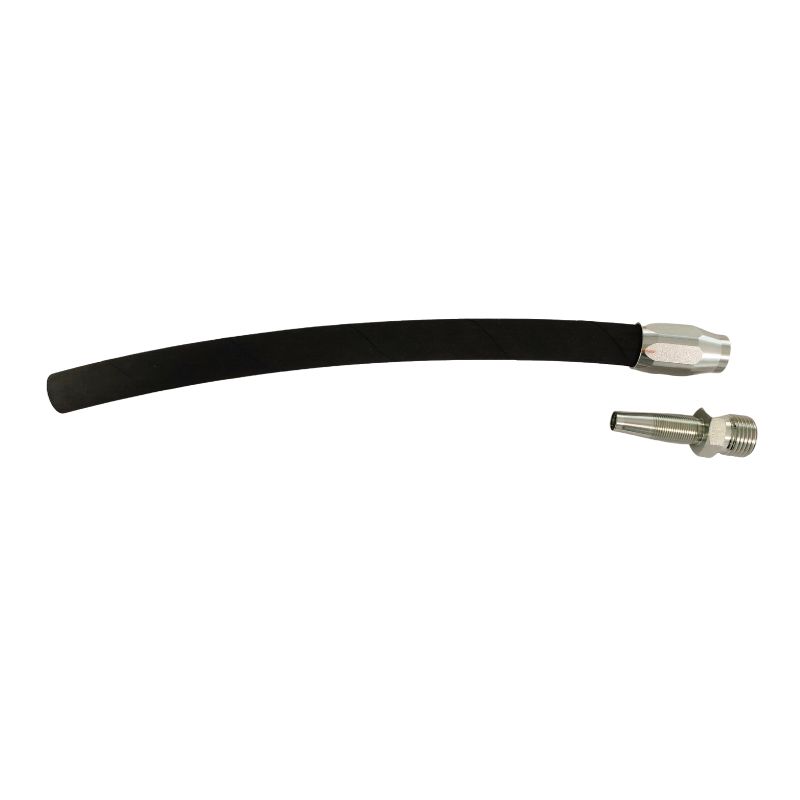
This design is a game-changer for field service and emergency repairs, especially in industries like marine, logging, and remote agriculture. It means you only need to carry bulk hose and a variety of reusable fittings. This gives you the flexibility to build a hose of any length at any time, drastically reducing downtime and eliminating the need to stock dozens of different pre-made hose assembly lengths.
The Anatomy of a Reusable Fitting
The magic of this fitting is in its two-piece mechanical design.
- The Socket: This is the outer part with internal threads. You first screw this counter-clockwise onto the outside of the hydraulic hose. The threads cut into the hose cover and grip the wire reinforcement.
- The Nipple: This is the inner part that has the fitting end (e.g., JIC, NPT). You lubricate it and screw it clockwise into the socket. As it threads in, it expands the hose, forcing it tightly against the socket threads, creating an extremely strong mechanical and hydraulic seal.
Reusable vs. Crimped Fittings
The primary difference lies in how the fitting is attached to the hose. A permanent crimp fitting uses a hydraulic crimping machine to deform a metal collar (ferrule) around the hose.
| Feature | Reusable Fittings | Crimped Fittings |
| Assembly | Hand tools (wrenches, vise) | Requires a large hydraulic crimper |
| Location | Excellent for field/emergency repair | Best for factory/shop production |
| Speed | Slower per-unit assembly | Very fast for high-volume production |
| Cost | Higher initial part cost | Lower initial part cost |
| Flexibility | Maximum; make any length on-site | Zero; assembly length is fixed |
The Value Proposition for Marine Operations
For a ship at sea or a rig offshore, the ability to repair a hose immediately is invaluable. Carrying a massive crimper is not practical. Carrying spools of hose and boxes of reusable stainless fittings is. This capability transforms a potentially week-long shutdown into a one-hour repair job, directly impacting safety, operational readiness, and profitability.
Why Combine Stainless Steel With Reusability?
You understand the benefit of corrosion-resistant stainless steel. You also see the value of field-serviceable reusable fittings. But why is the combination of the two so powerful for marine applications?
Combining the two creates the ultimate marine hydraulic solution. You get the best-in-class corrosion protection of 316 stainless steel and the in-the-field serviceability of a reusable design. This pairing directly addresses the two biggest challenges of marine hydraulics: environmental degradation and logistical difficulty of repair.
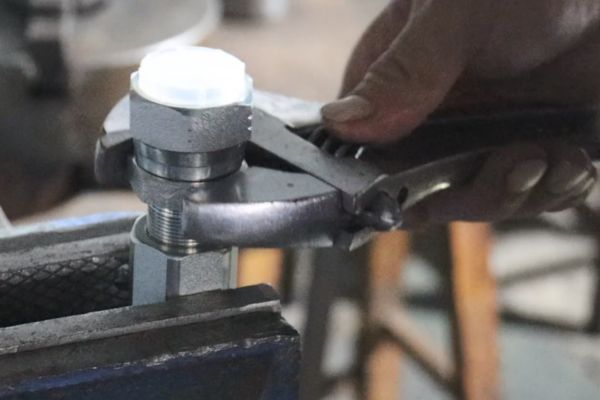
This isn’t just a component choice; it’s a strategic decision. You are equipping your vessel or platform with a self-sufficient repair capability that is also immune to the corrosive environment. A standard steel reusable fitting would still rust and fail. A crimped stainless assembly can’t be repaired at sea if it’s the wrong length or gets damaged. Only the combination of stainless steel + reusable provides a truly robust and resilient solution for the demanding offshore industry.
Maximum Reliability, Maximum Flexibility
This combination provides a two-pronged benefit.
- Maximum Reliability: The 316 stainless steel material ensures the fitting itself will not fail due to corrosion, protecting the integrity of your hydraulic system over the long term. It resists pitting and crevice corrosion common in saltwater environments.
- Maximum Flexibility: The reusable design means that if the hose portion of the assembly gets chafed, cut, or simply wears out, you don’t have to replace the expensive stainless steel ends. You can unscrew them, cut a new piece of hose from bulk stock, and re-assemble it on the spot.
Cost-Effectiveness Over the Lifecycle
While the initial purchase price of a stainless steel reusable fitting is the highest of any option, it is often the most cost-effective over the life of the equipment.
- Reduced Downtime: The ability to perform immediate repairs saves thousands in lost revenue.
- Lower Inventory Costs: You stock bulk hose and fittings, not hundreds of unique hose assemblies.
- Reusability of Ends: The expensive part of the assembly (the stainless fittings) can be used over and over again. The only consumable is the much cheaper bulk hose.
Which Stainless Steel Grade is Best for Marine Use?
Your spec sheet lists “stainless steel,” but you see options for 304 and 316 grades. Choosing the wrong one could mean your “corrosion-proof” fitting fails just as quickly as a plated steel part.
For any marine or saltwater application, 316 grade stainless steel is the only acceptable choice. While 304 stainless is fine for general purposes, it lacks resistance to chloride corrosion. The Molybdenum content in 316 stainless steel provides the necessary protection against pitting and crevice corrosion caused by saltwater.

We are often asked why we exclusively recommend 316 for marine customers. The reason is performance and reliability. In our testing and from decades of field data, 304 stainless steel simply does not hold up to direct saltwater exposure. The small price premium for 316 grade is negligible compared to the cost of a failure at sea. Insisting on 316 is the single most important decision you can make when sourcing stainless fittings.
The Critical Role of Molybdenum
The key difference between these two common grades of austenitic stainless steel is one element.
| Feature | 304 Stainless Steel (A2) | 316 Stainless Steel (A4) |
| Composition | Chromium, Nickel | Chromium, Nickel, Molybdenum |
| Corrosion Resistance | Good (general, atmospheric) | Excellent (chlorides, acids, salt) |
| Marine Suitability | Poor – Prone to pitting from salt. | The Standard – Resists chloride attack. |
| Typical Cost | Lower | ~15-25% Higher |
The ~2% Molybdenum content in 316 stainless steel fundamentally changes its properties, allowing it to maintain its passive, corrosion-resistant layer even when exposed to chlorides.
How Do You Assemble a Reusable Fitting?
You have the correct stainless steel reusable fitting and a new length of hose, but you’ve never put one together. An improper assembly can blow apart under pressure, causing a dangerous failure.
Assembling a reusable fitting is a straightforward mechanical process that requires no special machines. By following a clear, step-by-step method of cutting the hose, screwing on the socket, and installing the nipple, you can create a reliable, factory-quality hose assembly with just a few hand tools.

The process is simple, but precision is key. Rushing the job or skipping a step can lead to a leak or a failure. We teach this process to our customers to empower their field technicians. Taking the time to do it right ensures a safe and durable repair that you can trust to hold pressure and keep your equipment running. Always wear safety glasses and gloves during this process.
Step-by-Step Assembly Guide
- Cut the Hose: Cut the hydraulic hose to the required length using a fine-tooth hacksaw or a hose cutting wheel. Ensure the cut is clean and square.
- Mark the Socket Depth: Push the hose into the socket until it bottoms out. Mark the hose at the back of the socket with chalk or a paint pen.
- Secure and Screw on the Socket: Place the hose in a vise. Screw the socket onto the hose **counter-clockwise**. The threads will bite into the cover. Continue until the mark on the hose is flush with the back of the socket.
- Lubricate the Nipple: Apply a light coat of hydraulic oil or assembly lubricant to the threads of the nipple and to the inside of the hose. This is a critical step to prevent thread galling, especially with stainless steel.
- Install the Nipple: Screw the nipple clockwise into the socket by hand as far as it will go.
- Tighten the Nipple: Use two wrenches—one to hold the socket and one to tighten the nipple. Tighten until there is a small gap (approx. 1/32″ to 1/16″ or 0.5-1.5mm) between the nipple hex and the socket. Do not tighten until they touch. This gap is necessary for the fitting to function correctly under pressure.
- Clean and Inspect: Clean the finished assembly and inspect your work. The connection should look solid and professional.
When Might a Crimped Fitting Be Better?
Reusable fittings seem like the perfect solution for field repairs. But are they always the best choice? Is there ever a reason to choose a permanently crimped fitting, even in stainless steel?
Yes. For high-volume production in a controlled factory setting, permanent crimp fittings are better. Crimp machines are incredibly fast, consistent, and produce a slightly lighter and more compact assembly. If you are manufacturing new equipment and do not need field serviceability, crimping is the more efficient and economical method.
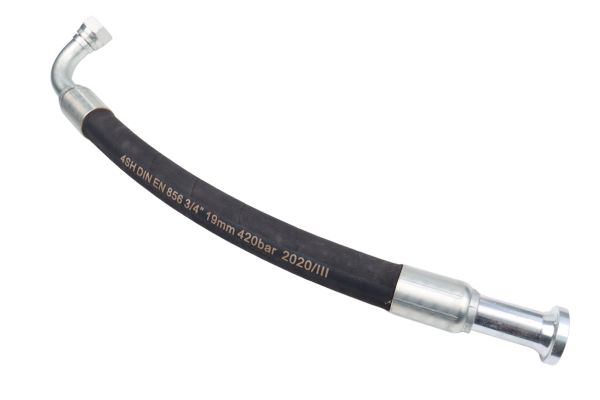
It’s about using the right tool for the right job. Reusable fittings are designed for flexibility and field repair. Crimped fittings are designed for speed and mass production. As a manufacturer of both, we see customers use a hybrid approach. They might build their core equipment with crimped assemblies but supply their customers with stainless reusable fittings and bulk hose in their spare parts kits for field service.
Comparing the Two Assembly Methods
| Aspect | Stainless Reusable Fitting | Stainless Crimp Fitting |
| Best Use Case | Field repair, remote locations, low-volume | Factory production, high-volume |
| Required Tools | Standard wrenches | Expensive, heavy hydraulic crimper |
| Assembly Time | 5-10 minutes per end | <1 minute per end |
| Consistency | Depends on technician skill | Extremely high and repeatable |
| Size & Weight | Larger and heavier | More compact and lighter |
| Overall Cost | High part cost, no machine cost | Lower part cost, high machine cost |
Conclusion
For marine applications, 316 stainless steel reusable fittings offer an unmatched combination of corrosion resistance and field serviceability. They are a strategic investment in reliability and uptime, protecting your equipment and your operation from the harsh realities of the sea.
Contact us today to secure fittings that deliver long-lasting corrosion resistance and on-site serviceability. With our fast delivery and dedicated support, you can be sure your vessel or offshore platform stays ready for every challenge.
FAQ
Can reusable stainless steel fittings handle the same pressure ratings as crimped fittings?
Yes, when properly assembled, reusable stainless steel fittings can meet the same working pressure ratings as their crimped counterparts. However, they must always be matched to the correct hose type and size.
How do I prevent galling when assembling stainless steel fittings?
Use a suitable lubricant such as hydraulic oil or an anti-seize compound on the threads before tightening. This reduces friction and prevents thread damage, especially in stainless steel.
Are reusable fittings approved for use in classified offshore equipment?
Most reusable stainless steel fittings comply with industry standards (such as SAE and ISO). For offshore or marine classed vessels, always check if they meet the specific certification requirements of classification societies like DNV or ABS.
What is the typical service life of a 316 stainless steel reusable fitting?
With proper installation and maintenance, these fittings can last 5–10 years or more in marine service. Their longevity depends on hose wear, vibration, and the aggressiveness of the environment.
Do reusable stainless fittings require special maintenance once installed?
They do not need unique maintenance, but regular inspections are recommended. Checking for thread integrity, leaks, and hose wear will ensure maximum reliability in service.
Can I retrofit existing crimped assemblies with reusable stainless steel fittings?
Yes, you can replace crimped ends with reusable ones as long as the hose is compatible.




